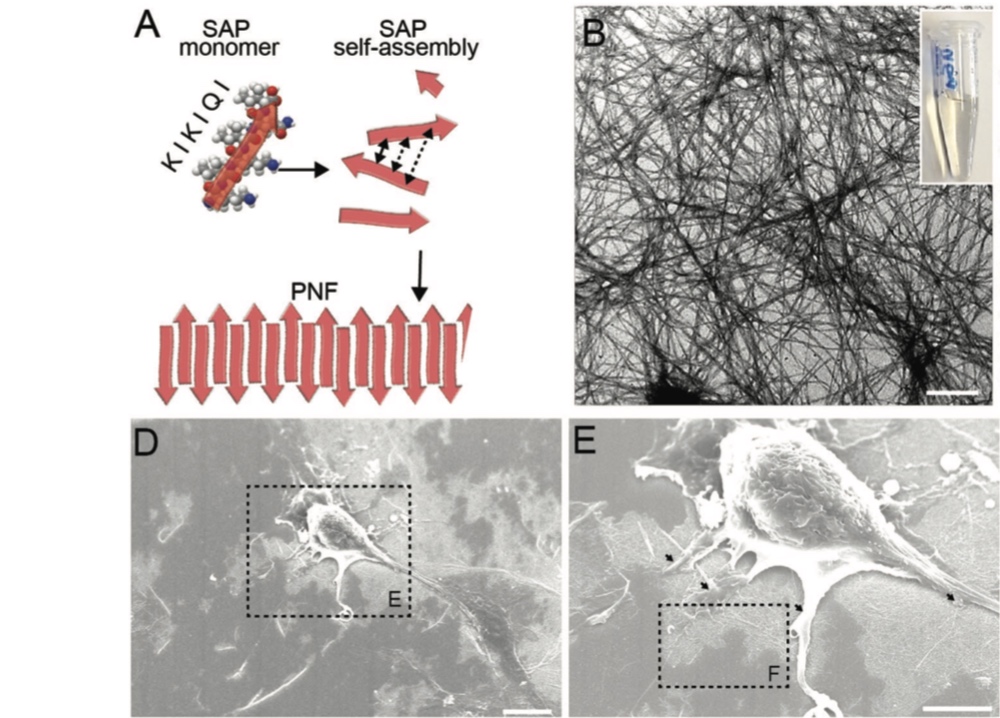Corinna Schilling, Thomas Mack, Selene Lickfett, Stefanie Sieste, Francesco S Ruggeri, Tomas Sneideris, Arghya Dutta, Tristan Bereau, Ramin Naraghi, Daniela Sinske, Tuomas PJ Knowles, Christopher V Synatschke, Tanja Weil, Bernd Knöll, Advanced Functional Materials (2019)
Data mining of functional peptides
There is an urgent need for biomaterials that support tissue healing, particularly neuronal regeneration. In a medium throughput screen novel self‐assembling peptide (SAP) sequences that form fibrils and stimulated nerve fiber growth of peripheral nervous system (PNS)‐derived neurons are identified. Based on the peptide sequences and fibril morphologies and by applying rational data‐mining, important structural parameters stimulating neuronal activity are elucidated. Three SAPs (SAP1e, SAP2e, and SAP5c) enhance adhesion and growth of PNS neurons. These SAPs form 2D and 3D matrices that serve as bioactive scaffolds stimulating cell adhesion and growth. The newly discovered SAPs also support the growth of CNS neurons and glia cells. Subsequently, the potential of SAPs to enhance PNS regeneration in vivo is analyzed. For this, the facial nerve driving whisker movement in mice is injured. Notably, SAPs persist for up to 3 weeks in the injury site indicating highly adhesive properties and stability. After SAP administration, more motor neurons incorporating markers for successive regeneration are observed. Recovery of whisker movement is elevated in SAP‐injected mice. In summary, short peptides that form fibrils are identified and the adhesion, growth, and regeneration of neurons have been efficiently enhanced without the necessity to attach hormones or growth factors.

